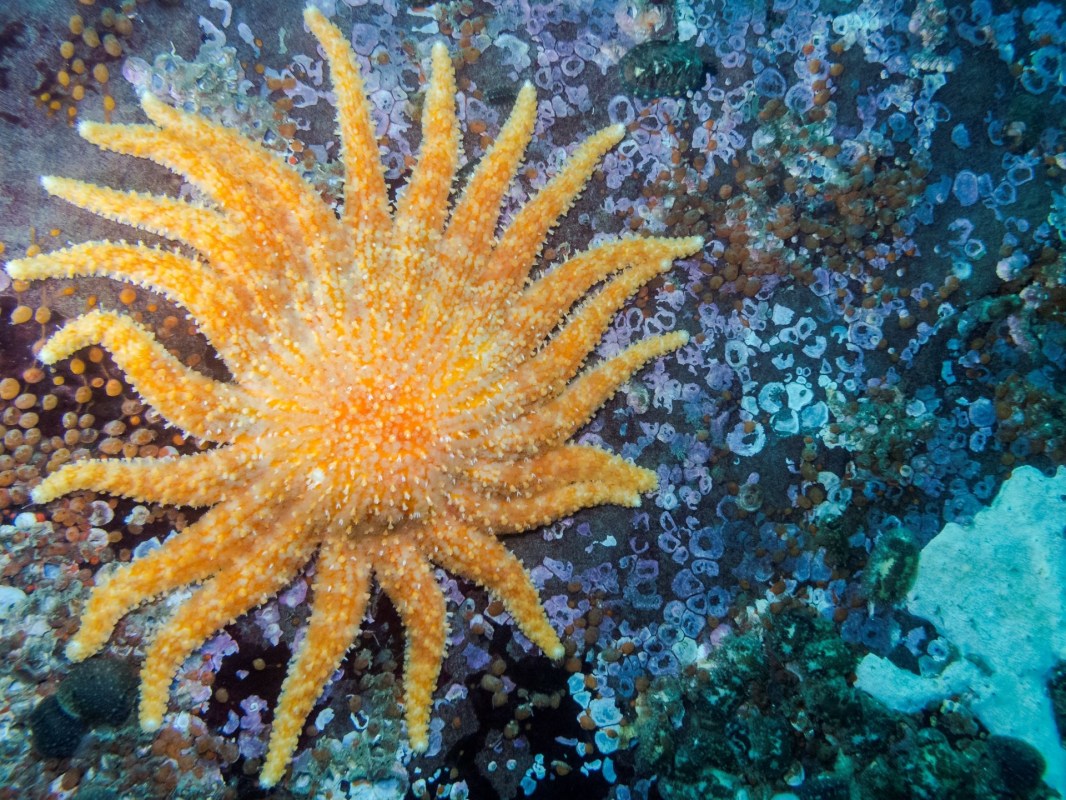Good news is on the way for a beleaguered starfish species that is being decimated — literally one limb at a time.
The sunflower sea star is likely to be listed as an endangered species later this year. That's important news because nearly 90% of the population was wiped out between 2013-17 by a wasting disease; experts think climate change and warming waters are fueling the issue.
The population is now estimated at 600 million worldwide, less than 10% of their population before 2013.
The 20-limbed sea star had thrived along the West Coast. They are orange, red, purple, or beige, about 3 feet from arm tip to arm tip, and are often admired by scuba divers, the National Oceanic and Atmospheric Administration (NOAA) reports.
Recognition under the Endangered Species Act could be a lifesaver for the ocean dweller. Some of the benefits the listing could provide include funding for research to combat the disease and habitat protections.
Endangered status has worked to help other species, including the Fender's blue butterfly.
The New York Times reports that a decision from NOAA on the sea star's status should come within the next year.
"I'm ecstatic that the sunflower sea star will get the safeguards of the Endangered Species Act," Center for Biological Diversity's program director Miyoko Sakashita told the Times. The nonprofit agency is advocating for the listing. "A climate-fueled pandemic nearly wiped them out, and I'm optimistic that a threatened listing will assist their recovery," she said.
The sea stars are important because they eat a variety of creatures that live on the ocean floor. NOAA reports that the predator can influence ecosystem structure. For example, the starfish eats sea urchins. The urchins eat kelp and other vegetation that are part of the habitat for other creatures.
"This is a signature species of the North Pacific coastal ecosystem where so many of us have marveled at vibrant tidepools and towering kelp forests," said Dayv Lowry, a fisheries biologist who is studying the species. "The sunflower sea star is an integral species that helps make this ecosystem what it is, and the proposed listing recognizes the grave threat the species currently faces."
The disease is brutal. NOAA reports that the syndrome includes lethargy, lesions, and decay. Limbs drop off until the creature dies. The syndrome runs its course within days.
Biologists said the marine outbreak is a record-setter.
"The science indicates that warmer temperatures and other stressors fueling disease are pushing this species toward an elevated risk of extinction," NOAA's Chris Yates said. "Listing the species as threatened may not stop the warming, but it does mean that we will look for ways to conserve the species where it still has a chance to survive as part of our rich coastal ecosystem."
Join our free newsletter for cool news and cool tips that make it easy to help yourself while helping the planet.









